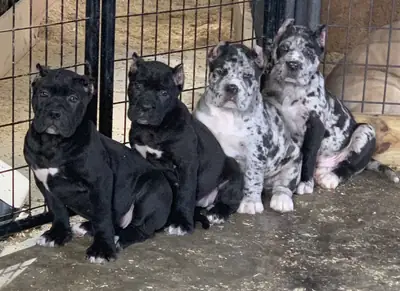Mastiff: Temperament, Care, Nutrition, Health and 2026 Lifestyle Guide
The Mastiff pairs monumental size with a calm, loyal temperament. By 2026, giant-breed caretakers rely on adaptive flooring, orthopedic beds, biometric collars and AI-driven feeding plans to keep these gentle guardians comfortable and safe.
1. Breed Profile
- Weight: 120 – 230+ lb (54 – 105+ kg)
- Height: 28 – 35 in (71 – 89 cm) at shoulder
- Lifespan: 8 – 12 years
- Temperament: Calm, confident, family-focused guardian
- Coat: Short double coat; moderate shedding, requires routine cleaning
2. 2026 Home Setup & Comfort
- Orthopedic mega-beds, memory foam ramps and low-profile furniture reduce joint stress.
- Non-slip flooring plus smart air systems maintaining 65–72°F (18–22°C) and humidity 40–50%.
- Motion-triggered water stations and cooling mats for summer months.
- Designated decompression zones free from household traffic.
3. Nutrition & Portion Strategy
Giant breeds thrive on steady energy, lean mass maintenance and proactive joint support. Modern smart bowls track intake and prevent rapid eating.
| Component | Target | Examples | Role |
|---|---|---|---|
| Protein | 23–26% adult, controlled 25% growth | Turkey, lamb, salmon, egg | Muscle repair, connective tissue |
| Fat | 12–16% | Fish oil, canola, MCT (per vet) | Energy, skin/coat |
| Complex carbs | Moderate | Oats, brown rice, chickpea | Balanced energy, gut comfort |
| Functional additives | Targeted | Glucosamine, chondroitin, MSM | Joint resilience |
| Micros | Rich | Spinach, pumpkin, blueberry | Antioxidants, immunity |
Tip: Split into two meals; enforce calm for 30 minutes post-meal to reduce GDV risk.
4. Grooming & Hygiene
- Brush twice weekly; daily during seasonal blow-outs.
- Clean facial folds with hypoallergenic wipes, then dry thoroughly.
- Monthly baths; replenish natural oils with coat conditioners.
- Nail trims every 3–4 weeks; ear checks weekly.
5. Health Watchpoints
- Hip/elbow dysplasia: Weight control, hydrotherapy, early screening.
- GDV: Slow-feeder bowls, elevated heart-rate monitors, prophylactic gastropexy for high-risk lines.
- Cardiac health: Annual echocardiograms; monitor resting respiration.
- Osteoarthritis: Cold-laser therapy, underwater treadmills, joint nutraceuticals.
- Skin infections: Routine fold care, omega balance, allergen management.
6. Training & Tech
- Positive reinforcement with emphasis on impulse control and polite greetings.
- Wearable trackers deliver custom exercise plans; integrate low-impact strength work.
- Calming protocols: scent therapy, structured downtime, desensitization drills.
- Broad socialization: surfaces, people, vet equipment, mobility aids.
7. Travel & Emergency Prep
- Wide, crash-tested car harnesses or XXL crates with airflow sensors.
- Cooling vests, electrolytes and rest stops every 90 minutes on road trips.
- Microchip + GPS collar + NFC tag for instant data sharing.
- Emergency kit: paw balm, anti-slip booties, vet dossier.
8. Frequently Asked Questions
How much exercise is ideal?
Two 30-minute structured walks plus brief scent/puzzle sessions; avoid repetitive jumping.
Is a Mastiff suitable for apartments?
Possible with elevators/ramps, strong flooring and daily outdoor access; space planning crucial.
How to manage drool?
Keep absorbent cloths handy, wipe folds after meals, ensure hydration and ambient cooling.
What about heat sensitivity?
Exercise at dawn/dusk, use shade structures, cooling mats and airflow collars.
Best bed choice?
High-density orthopedic foam, washable covers, low step-in height.
How to slow puppy growth?
Controlled-calorie large-breed formulas, regular weigh-ins, vet-monitored body condition.
Do they get along with other pets?
Generally tolerant when socialized young; supervise interactions due to size.
Which supplements help joints?
Glucosamine/chondroitin, omega-3, collagen peptides (per veterinary guidance).
How often vet visits?
Twice-yearly wellness exams; baseline bloodwork by age four.
Any special winter care?
Moisturizing paw balms, heated bedding, indoor mobility exercises.
How long can they stay alone?
Prefer human company; limit alone time to 4–5 hours with enrichment.
What vaccinations matter most?
Core canine set plus region-specific tick/flu coverage; consult local vet.
9. Conclusion
When matched with thoughtful home design, structured nutrition, gentle conditioning and proactive veterinary care, the Mastiff flourishes as a serene, steadfast family companion in 2026.
